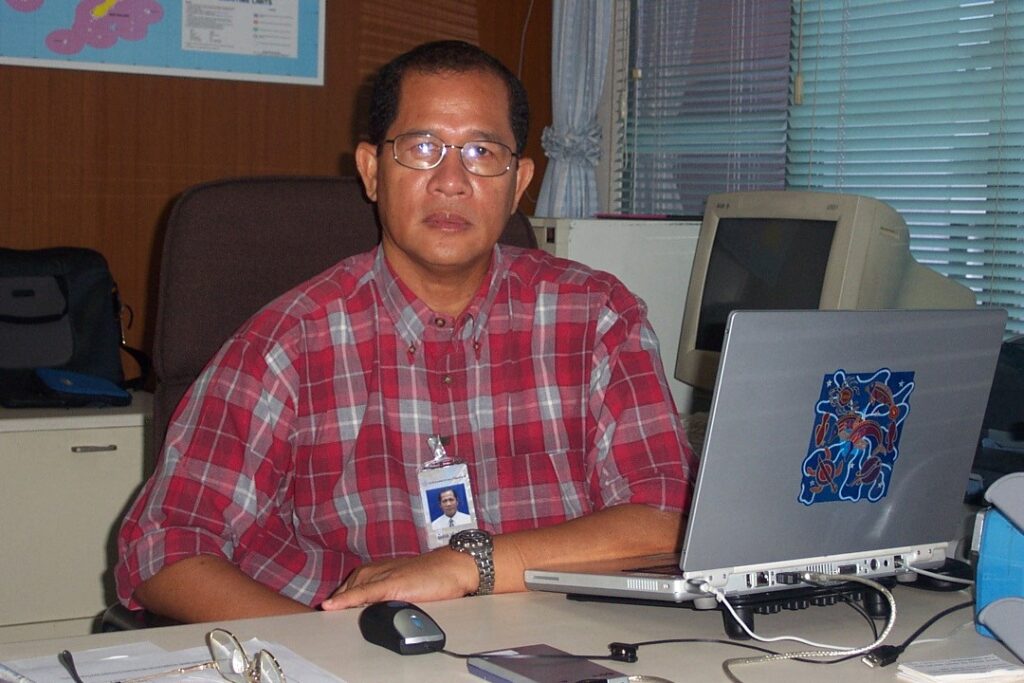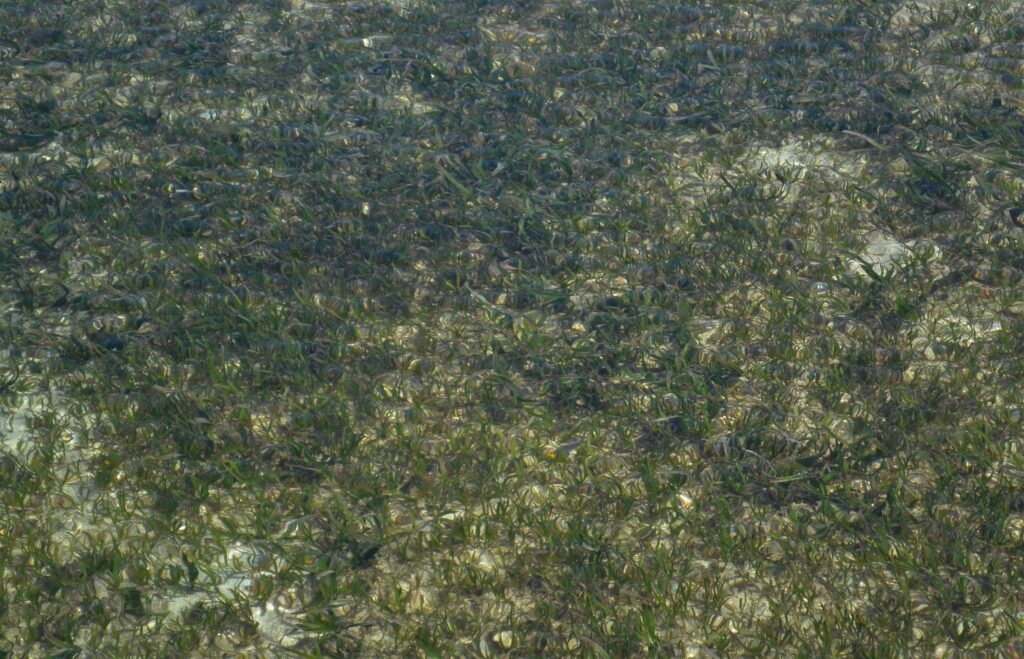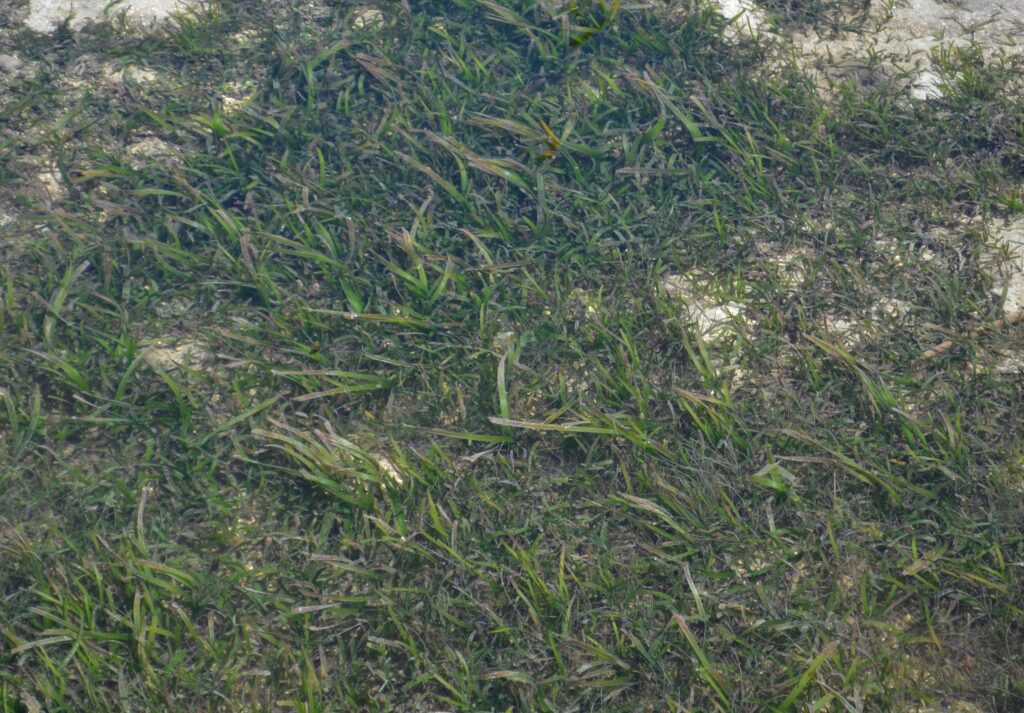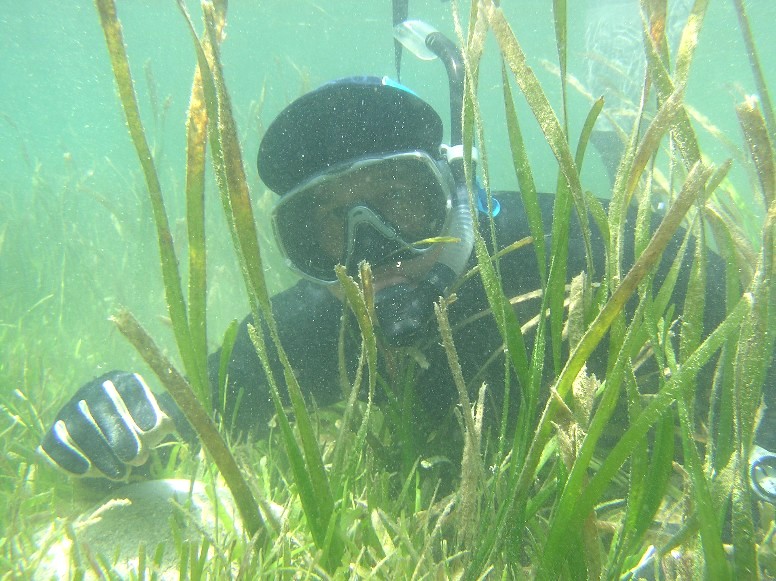Text and Photos Henrylito D. Tacio
Additional Photos by Dr. Miguel Fortes
Perhaps one of the most beautiful islands in Mati City, Davao Oriental, is Pujada Island. I had the pleasure of visiting the white-sand island at least twice. The water is crystal clear, and the place is so pretty that you are transported back into the time when you were still a kid and swimming on the beach was a welcome treat.
This island, one of the four, is situated in the bay that has been declared a marine protected area in 1994 by then President Fidel V. Ramos. It covers 21,200 hectares protecting the bay and its coastal area.
But what is interesting is that Pujada Bay is known to harbor nine of the sixteen species of seagrasses found in the Philippines. “That’s why we have plenty of marine turtles and dugongs in our waters,” said provincial board member Louie Rabat.
The endangered dugongs are the world’s only vegetarian marine mammals and are reliant on seagrasses for food. They can eat up to 40 kilograms of seagrasses per day. “The dugongs that live in these seagrass ecosystems are excellent barometers indicative of the overall health of the ecosystem,” said the Dugong and Seagrass Conservation Project.
Globally, seagrasses are used as filling for mattresses. In Europe and Africa, they are used as roof coverings. In the Mediterranean, traditional healers use seagrasses as a medicine against skin diseases.
Aside from skin diseases, a recent study discovered that a specific type of seagrass is strong medicine against malaria; it is also found “to be very effective in early stages of leprosy.” As they are nutraceutical in nature, seagrasses can be made into food supplements.
New research published in Science also showed that seagrass meadows could reduce bacterial exposure to corals, other sea creatures, and human beings. “The seagrass appears to combat bacteria, and this is the first research to assess whether that coastal ecosystem can alleviate disease associated with marine organisms,” said lead author Joleah Lamb of Cornell’s Atkinson Center for a Sustainable Future.
Several studies have revealed that they are also very important in offsetting carbon dioxide emissions. Research from Edith Cowan University – published in the journal PLOS ONE – shows that seagrass meadows, hidden beneath the oceans, lock away between four and ten times that of tropical forests. “Pound-for-pound, they are big hitters when it comes to snatching carbon out of the atmosphere,” it said.
Another study – from the University of York and published in Frontiers in Marine Science – seemed to agree. “Seagrass meadows could play a vital role in combating climate change as they are regarded as a net global sink for carbon,” explained Adam Hejnowicz, who headed the study. “They have the capacity to bury significant deposits of organic carbon beneath the sediment, up to many meters thick in places and over millenary time scales.”

Seagrass meadows – bountiful underwater gardens that nestle close to shore – have the natural capacity to sequester and store enormous amounts of so-called “blue carbon” in their sediments. “As carbon sinks, they are a cheap and readily available natural resource useful in mitigating the negative impacts of climate change,” explained Dr. Miguel Fortes, the first Filipino to receive the prestigious International Biwako Prize for Ecology.
Blue carbon is actually carbon from the atmosphere and oceans. The seagrasses sequester those emitted carbon dioxide from going into the atmosphere by storing them in the ecosystem. As a result, they help mitigate the consequences brought about by climate change.
The Philippines is one of the countries that is greatly affected by climate change. The World Bank report, Getting a Grip on Climate Change in the Philippines, stated: “Climate change is occurring nowpine and will intensify in the next few decades, threatening in particular developing nations, with the Philippines being one of the most vulnerable countries in the world.”
According to the bank report, the Philippines is “already experiencing temperature increases; sea level rise; stronger storms, floods, and droughts; and ocean acidification, all of which will intensify and affect subsistence livelihoods as well as urban and coastal areas.”
Although seagrass meadows can store large amounts of carbon, they are under assault around the world. “Global loss of seagrass meadows is about 7% each year since 1990,” said Lamb.
The Philippines fares no better. “(Seagrasses) are at great risk of being lost and if the trend continues at current rates, a further 30-40% of seagrasses and nearly all unprotected mangroves could be lost in the next 100 years,” lamented Dr. Fortes. “Once they are degraded or destroyed, their blue carbon stores are released as carbon dioxide and contribute to global climate change.”

Seagrass bed 
Seagrass
Dr. Fortes said that the current rates of loss of these ecosystems might result in 0.15 to 1.02 billion tons of carbon dioxide released annually. “Hence, it is imperative that these blue carbon ecosystems be conserved and well-managed,” he suggested.
Since the time of the dinosaurs, three groups of flowering plants have colonized the oceans. Seagrasses, however, are the only flowering plants that can live underwater. More closely related to terrestrial lilies and gingers than to true grasses, they grow in sediment on the seafloor with erect, elongate leaves.
Seagrasses are quite different from seaweeds, which are algae. Seagrasses produce flowers, fruits, and seeds, while seaweeds make spores. Seagrasses have separate roots, leaves, and underground stems called rhizomes (which form an extensive network below the surface). Seaweeds rarely have “roots” below the surface.
“Unlike seaweeds, seagrasses are vascular plants – they have a network of veins to move nutrients and dissolved gases around the plant,” states the Bureau of Fisheries and Aquatic Resources (BFAR). On the Great Barrier Reef of Australia, over 500 species of algae can be found, but only 14 species of seagrasses inhabit.
In terms of seagrasses globally, the Philippines – with 16 species thriving along its coasts – has the second highest. Western Australia has more; it has 17 species of seagrasses.
Dr. Fortes said all 16 seagrass species are widely distributed from Bolinao Bay in the north, Palawan and the Cebu-Bohol-Siquijor area at the center, and Zamboanga and Davao in the south. Seagrass beds cover an estimated area of about five million hectares.
Marine experts traced the rapid disappearance of seagrasses to various destructive disturbances caused by both natural and man-induced influences. Among the natural threats are typhoons, tidal waves, and volcanic activity.
Man-made causes include industrialization, development of recreational areas along the coast, dredging, and mining, which led to heavy siltation in estuarine areas, resulted in lower productivity and even burial of seagrasses, according to a report from the Department of Environment and Natural Resources.
“The Philippines has enormous coastal blue carbon resources useful in sequestering carbon dioxide from the global atmosphere,” reminded Dr. Fortes. “However, it has also the potential to add carbon dioxide into the atmosphere if it does not manage well its coastal blue carbon ecosystems well.”
Dr. Fortes believed the Philippines could still reverse the loss of seagrasses. “An improved scientific and societal understanding of the underlying mechanisms that conserve coastal ecosystems are at hand,” he said. “The blue carbon focus could enhance partnerships in improving resilience of communities towards a blue economy in the face of climate change.”

